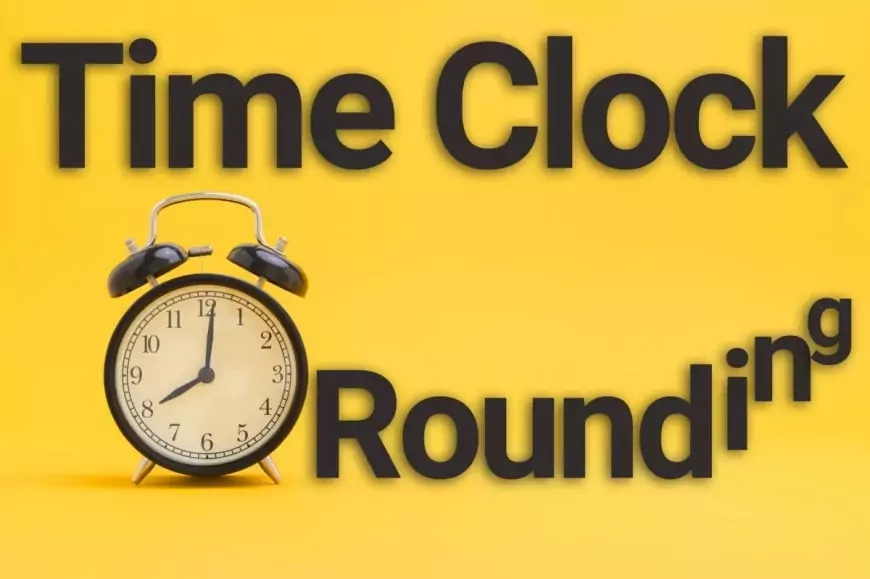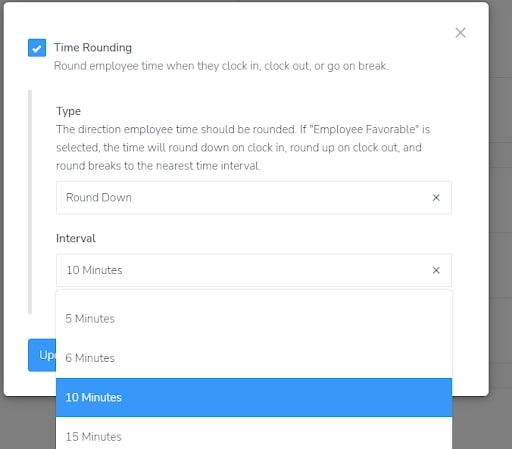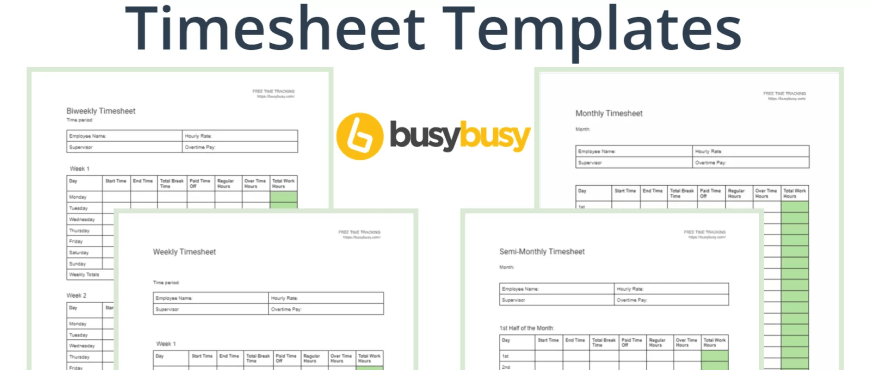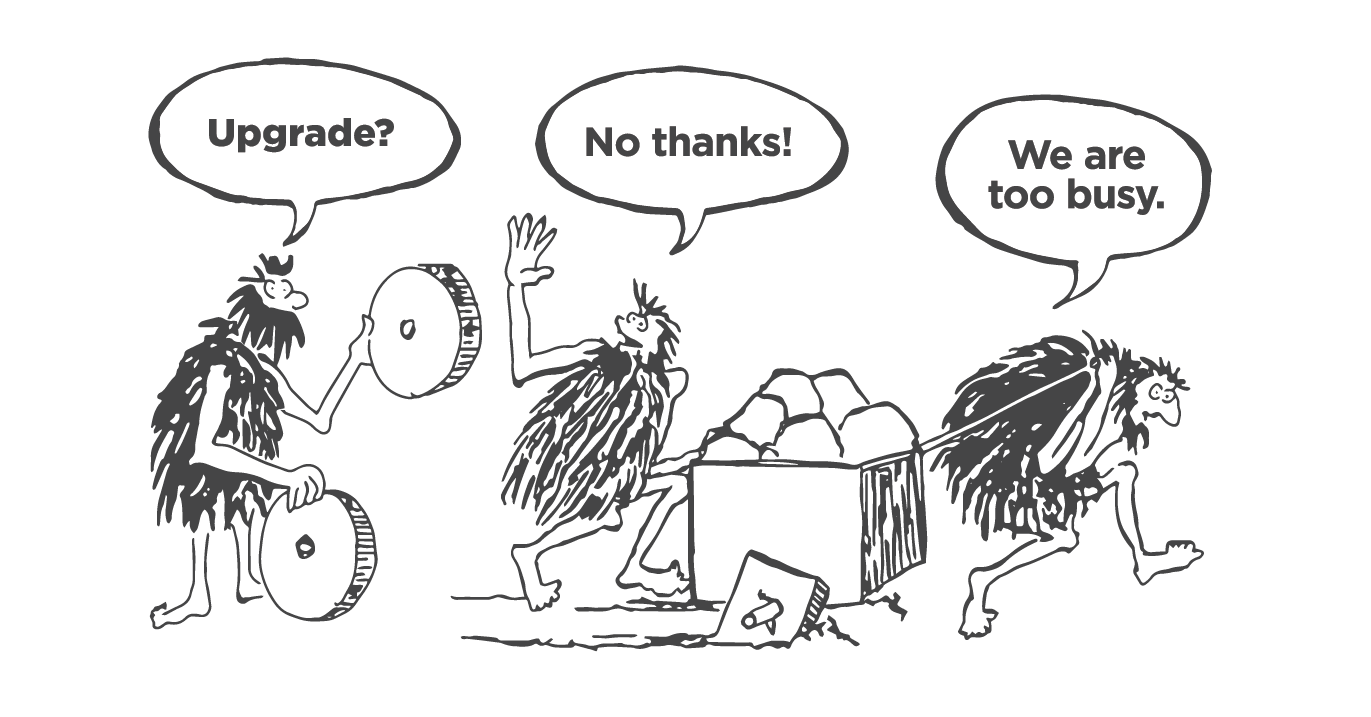
Time rounding, also known as time clock rounding, is a method that allows employers or supervisors to gather their employees’ clocked hours and change them to easier figures for accounting purposes when calculating payroll. To prevent companies from abusing the system, the Department of Labor (DOL) provides some guidelines. The more familiar you are with these, the less chance there is of making an error that could lead to legal action.
With that in mind, the following guide will briefly go over timesheets, different ways you can round time, and the benefits of using time tracking apps.
Table of Contents
Information on Timesheets
Timesheets are digital or physical records of employees’ time at work. Employers use them to track employees’ time on tasks during a project. Their purpose varies depending on the employer.
Are Digital Timesheets Worth Your Time?
Of course! For any business, digital timesheets can help with:
- Gaining transparency into your projects
- Simplifying billing and invoicing while making them more accurate
- Calculating and processing payroll
- Identifying problem areas in your workflow that need improvement
- Improving overall productivity
Digital timesheets can vastly improve a company’s productivity every day in a variety of ways!
Using printable timesheet templates can be beneficial for companies, but how much money are you losing due to employees rounding up on their timesheets?
Is Timesheet Rounding Legal?
If time clock rounding is done correctly, it is legal! However, companies might get caught up in a lawsuit if proper practices aren’t in place. A company can’t always round down; employees wouldn’t get paid for the hours they worked. That is a violation of the FLSA (Fair Labor Standards Act).
In 2018, 200 employees of American Airlines out of New Jersey claimed that their time was rounded down. Judge Linares (who presided over the trial) declared,
“The plaintiffs have satisfied the commonality and predominance requirements here by setting forth allegations and initial evidence that hourly paid American employees at Newark Liberty International Airport are not being compensated for all hours worked due to the manner in which American operates its timekeeping system.”
Most employers will be okay if the timesheet rounding does not favor the employer but is fair and consistent. The U.S. Department of Labor states employers should round in 15-minute increments to avoid violating the FLSA minimum wage and overtime requirements.
According to the Pechman Law group, employers who have been sued by employees for wage and overtime violations due to rounding down hours on time clocks include Kroger Co., Walt Disney Parks & Resorts US Inc., and Morango Casino Resort & Spa.
In order to avoid these unwanted legal situations, the Department of Labor shared these three basic rules:
- Time clock rounding must be neutral or in favor of employees.
- Round time clock hours in 15-minute increments (the maximum allowed by the FLSA).
- For employee time, minutes from 1-7 should be rounded down to the nearest quarter hour, and minutes from 8-14 should be rounded up.
Why Do Employers Round Timesheets?
There are various reasons why employers or office management might want to round their employees’ timesheets. Here are some of the most common ones:
- Employers use rounding for convenience and administrative time-saving purposes.
- Rounded timesheets reduce inaccurate calculations and make calculating payroll simpler and quicker.
- Rounding time adds flexibility for unexpected situations (car troubles, sick kids, or issues with public transportation). A few minutes here and there become less of a big deal.
- It prevents companies from paying excessive overtime.
Time Clock Rounding Rules
7 – Minute Time Clock Rounding
The 7 – minute rounding rule is often the most common rule companies will use and aligns with the DOL guidelines. The 7 – minute rule is named for the fact that you round back your time in the first 7 minutes of a 15-minute interval, and in the following 7 minutes, you round forward.
| Clock Time | 7 – Minute Time Clock Rounding |
| 6:53-7:07 | 7 |
| 7:08-7:22 | 7:15 |
| 7:23-7:37 | 7:30 |
| 7:38-7:52 | 7:45 |
| 7:53-8:07 | 8 |
5 – Minute Time Clock Rounding
This rule rounds logged time to the nearest 5 – minute interval. Although not as common as the 7 – minute rule, some companies still choose this method.
| Clock Time | 5 – Minute Time Clock Rounding |
| 6:58-7:02 | 7 |
| 7:03-7:07 | 7:05 |
| 7:08-7:12 | 7:10 |
| 7:13-7:17 | 7:15 |
| 7:18-7:22 | 7:20 |
| 7:23-7:27 | 7:25 |
| 7:28-7:32 | 7:30 |
| 7:33-7:37 | 7:35 |
| 7:38-7:42 | 7:40 |
| 7:43-7:47 | 7:45 |
| 7:48-7:52 | 7:50 |
| 7:53-7:57 | 7:55 |
| 7:58-8:02 | 8 |
6 – Minute Time Clock Rounding/One Tenth of an Hour
You guessed it! This rule is to round to the nearest 1/10 of an hour.
| Clock Time | 6 – Minute Time Clock Rounding |
| 6:58-7:03 | 7 |
| 7:04-7:09 | 7:06 |
| 7:10-7:15 | 7:12 |
| 7:16-7:21 | 7:18 |
| 7:22-7:27 | 7:24 |
| 7:28-7:33 | 7:30 |
| 7:34-7:39 | 7:36 |
| 7:40-7:45 | 7:42 |
| 7:46-7:51 | 7:48 |
| 7:52-7:57 | 7:54 |
| 7:58-8:03 | 8 |
Simplifying Time Clock Rounding with Technology
The FLSA doesn’t require any kind of time tracking system, so it’s up to you to determine how you want to track time. Employee time tracking technology has come a long way. Apps like busybusy will do your time clock rounding for you! In the Time Rounding settings, you can pick: nearest, round down, round up, and employee favorable. From there, you can select which intervals you want! It’s that simple and takes care of mobile time tracking for you.

Mobile time tracking can also eliminate employees clocking in before they should with a required onsite feature. This won’t allow employees to steal time and only lets them clock in once they are inside a customizable geofence.
Injury reports, timecard signatures, and required sign-in questions are built to help you stay in alignment with any illegal practices. This user-friendly app can also help you deal with a truckload of other problems (we know time rounding is not the only one).
Advantages of Rounding Time for Payroll with Time Tracking Apps
We’ve stated that payroll calculation and processing are easier when employees round their time, but did you know payroll time can be reduced by 67% with busybusy?
Don’t believe it? Listen to Alexandra with Norlen Construction.
“Now when I run payroll it takes me maybe 15 minutes. ”
After employees’ timecards are filled out and automatically rounded to the setting you have selected, the busybusy payroll scanner will check for any possible payroll errors, time entry conflicts, time off requests, open time entries, or missed timecard signatures! From there, you can streamline your payroll to almost any 3rd party payroll system.
You also have the option to keep everything in the same app by trying our BusyPayroll. After submitting payroll, we instantly sync with Gusto and start processing payroll. busybusy gives you a summary allowing you to look over the results, make needed changes, or cancel payroll altogether.
Conclusion
We hope this article provides you with different ways to round your time. Remember, time clock rounding is legal when done correctly, and there are apps to simplify this process. Finding software to do your time clock rounding for you is the best way to ensure you are always in compliance with the law and not overpaying or underpaying your employees.











